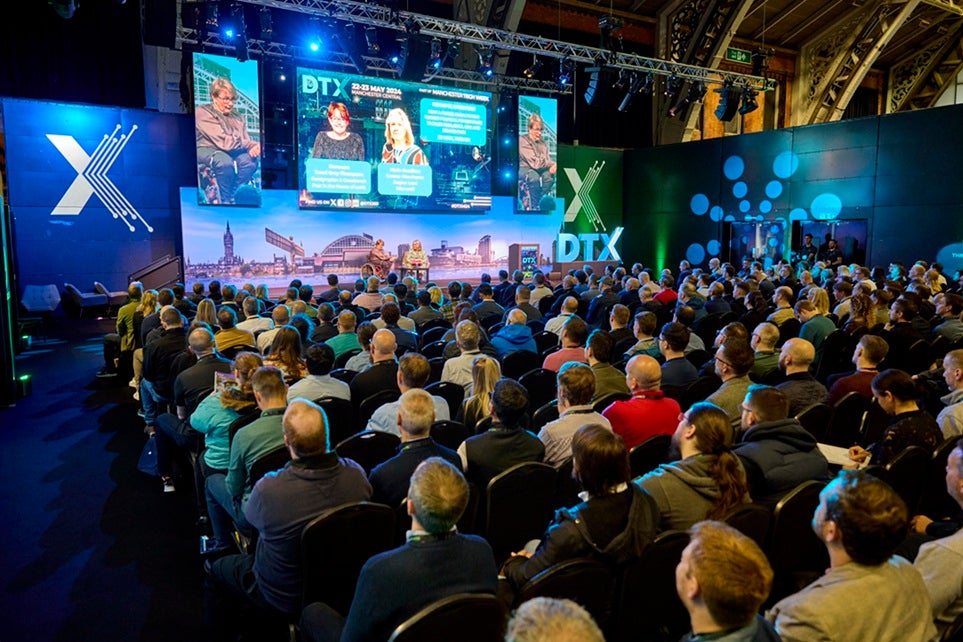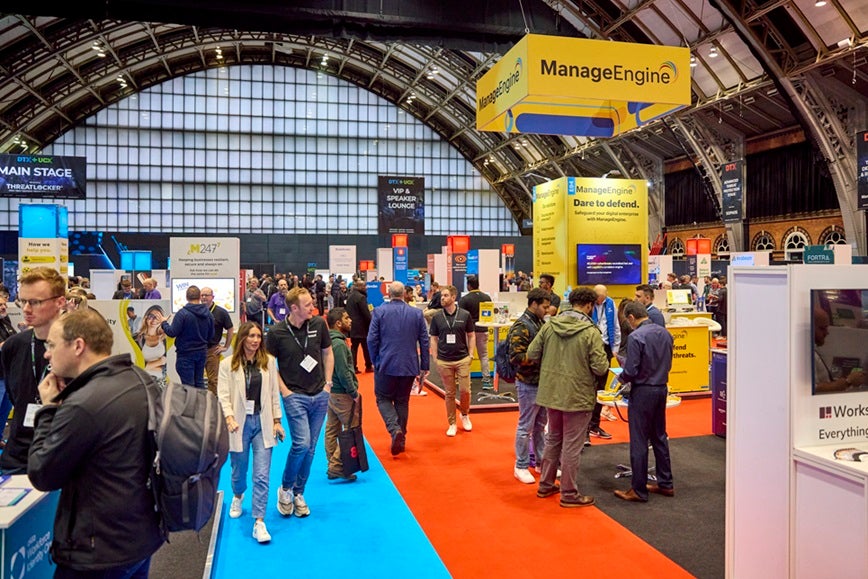On-prem or off-prem? That was the question at the heart of a cloud-focused panel discussion on day one of DTX Manchester. As it turns out, it’s something of a trick question. “It’s really a hybrid world,” said panel chair Bola Rotibi, chief of enterprise research at CCS Insights. “It’s not all in or all out. It’s a mixture.” She noted that more and more organisations are repatriating applications from the cloud while, at the same time, her research suggests that up to 35% of workloads are heading to the cloud.
Whether you move applications to the cloud depends on the characteristics of each individual workload. It also depends on your overall business strategy and the cost involved. Ray Siripan, global enterprise cloud architect at TUI Group, said that when it comes to the total price of cloud adoption, you need to look beyond the technology costs and consider the “culture costs”. That means changes to the way teams work and the skillsets they require. “Don’t lose sight of non-function costs,” he cautioned.
Expanding on this theme, Rotibi said that the application strategy should inform the conversation. By way of example, she cited a batch application that was considered by one financial firm to be a perfect “lift and shift” candidate. There was a problem, however. It was an “incredibly chatty” application. With data going backwards and forwards this workload was likely to incur expensive ingress and egress charges in the cloud. In this instance, on-premise remained a more cost-effective option.

The role of connectivity across city regions
“Connectivity feels more important than ever,” said Phil Swan, director of digital at Greater Manchester Combined Authority (GMCA) while introducing a discussion entitled ‘Harnessing infrastructure to create positive impact across city regions’ at DTX Manchester. Kathryn Rees, director of strategy at Stockport Council, expanded on the theme. “The right connectivity in the right places for the right purposes,” she said, by way of a strategic approach.
For local government, it’s the use cases that matter. Well-architected infrastructure projects provide the means. Take the nascent GM One Network project, a single active network that spans many of Greater Manchester’s public sector organisations. Working with Cisco, ServiceNow, and others, the goal of GM One is to provide network services that are more efficient, secure, and flexible. One way this might positively impact the region is by reducing connectivity costs and resources for local amenities. “We can pass on savings to our schools so [that] they can use their limited budgets on frontline services,” noted Rees.
Other applications can be built on top of the network, too. That is why Jon Burt, head of enterprise architecture at Manchester City Council characterises GM One as a “platform”, not just a network. “We can create additional products because we built it as a platform,” Burt said. Use cases will likely include more effective (and green) household heating, joined-up transport usage, and telemedicine. By applying these uses “we are addressing market failure,” said Swann. “It has a lot of potential.”
Initiatives like GM One are not just a product of partnership between public bodies and private companies. They result from partnerships between public bodies. As Phil Swan pointed out, the GMCA leadership is made up of the mayor Andy Burnham and ten councils. As such, getting approval requires agreement from all 11 stakeholders. Asked whether this slowed things down, Swan replied with an old adage: “‘If you want to go fast, go alone. If you want to go far, go together.’”
When GenAI met cybersecurity at DTX Manchester
‘GenAI or die’ was one of the more noticeable claims made during DTX Manchester. It was on a slide belonging to David Mareels, senior director of product management at Sophos. In his presentation – ‘Using GenAI to proactively strengthen your cyber security’ – Mareels argued that because SecOps is fundamentally a data challenge, those who don’t adopt generative artificial intelligence will soon be at a competitive disadvantage. Apply it, he said, to core capabilities such as data pre-processing, investigation and interpretation. And then apply it to other use cases where it makes sense.
To bring GenAI’s potential to life, he applied it to two critical steps of cybersecurity and through the prism of managed detection and response (MDR). Specifically, he highlighted the ‘clean’ and ‘correlate’ stages.
He characterised his first use case as “enrichment”, asking the AI not just to explain an attack but to classify it, give reasons for the classification, and set a confidence score. His second use case, he conceded, “is not there yet” but is an interesting foretaste of what is to come. In the use case he asked the GenAI to mimic the work of an analyst – from case creation to customer escalation – and devise recommendations by understanding how to logically categorise attacks, and do so meaningfully across time. Early experimentation suggests the human analyst remains the better option by far. That could soon change, however.
The other factor that is helping make the case for GenAI is what Mareels described as the talent war. In short, there isn’t enough cybersecurity expertise in the market and where there is, it is being snapped up by those – including Sophos – providing MDR services. And this brings us back to Mareels’ second use case. Already, it can sensibly be applied to XDR (Extended Detect and Response) and help a junior analyst assimilate relevant information. “It drops the adoption barrier,” he argued.
How intelligent technology adoption can drive sustainability
Friedemann Kurz is head of IT at Porsche supporting his firm’s ongoing racing programmes, including the TAG Heuer Porsche Formula E Team. He was at DTX Manchester to talk about all things sustainability. If that sounds counterintuitive in a sport as energy-intensive as motor racing, Kurz was ready to challenge some preconceptions. Talking ahead of a session, ‘How to drive sustainability in IT’, he told the DTX website: “Some people may not know that Formula E was the first sport with a certified net zero carbon footprint. When Formula E vehicles are attributed a specific amount of power to last a whole race, intelligent approaches to technology and data are crucial to getting to the finish line.”
He added: “When it comes to computing and component usage, being efficient by using pooled resources in the cloud that use sustainable energy is … vital.”
On the changing nature of data, he asked DTX Manchester to consider the case of the humble stopwatch from which, in the 1970s, most of the relevant data in motor racing was derived. Nowadays, added Kurz, “Data-driven approaches are… key success factors, and IT plays a crucial role in optimising cars during development, finding perfect strategies, and improving car setups for races.”

What are the biggest themes in IT today?
Is there an overarching theme or concern that occupies the minds of enterprise IT vendors and their customers halfway through 2024? It turns out there are a few themes. Or at least three. One is sustainability (see above). So thinks Jane Thompson, Global Director of Marketing at NetApp. “Our role is to first raise awareness and then offer solutions that help mitigate the problem.” This is a global issue, yet it is one that resonates differently from region to region. “In Europe, people are very much open to the sustainability conversation,” said Thompson.
Theme two is the changing face of security operations, Charlie Whitfield, vice-president of sales engineering at Artic Wolf, told DTX Manchester. “Tools vendors are consolidating and providing MDR services, removing the risk of hiring security experts [who are in short supply] and making sense of the security tools they own.”
Theme three is the escalating change in, and adoption of, new technology. “Our customers are watching how fast everything changes and how best to develop their skills,” said Jack Harte, business development consultant at PluralSight. “In reality, most don’t have time to learn.” Building on that theme, Paul David, product consultant at ManageEngine – a firm that specialises in monitoring, managing, and securing IT infrastructure – observed: “We need to adapt to new technologies because our customers are continually adopting new technologies.”
Three tips on AI integration into the workplace
David Dunbar is head of digital workspace at the Department of Work and Pensions (DWP), and he has some advice for organisations – both in the public and private sector – contemplating how to integrate artificial intelligence (AI). Dunbar – whose remit at DWP includes desktop, identity, accessibility, mobiles, and engineering environments – offered three pieces of advice in a pre-event interview.
First, he said, organisations must identify how to operationalise AI so it dovetails with their digital and workplace strategies. Second, they must consider the critical elements of building a solid business case for AI investments in the modern workplace. And third, it’s vital to understand the main opportunities and threats posed by AI in the workplace. The challenge of integrating AI remains as much cultural as it does structural. “Workplace design is still a very personal and architectural domain,” said Dunbar, “and we’re not quite ready to hand that over to machines because it’s centred around humans and the desired environment.”



